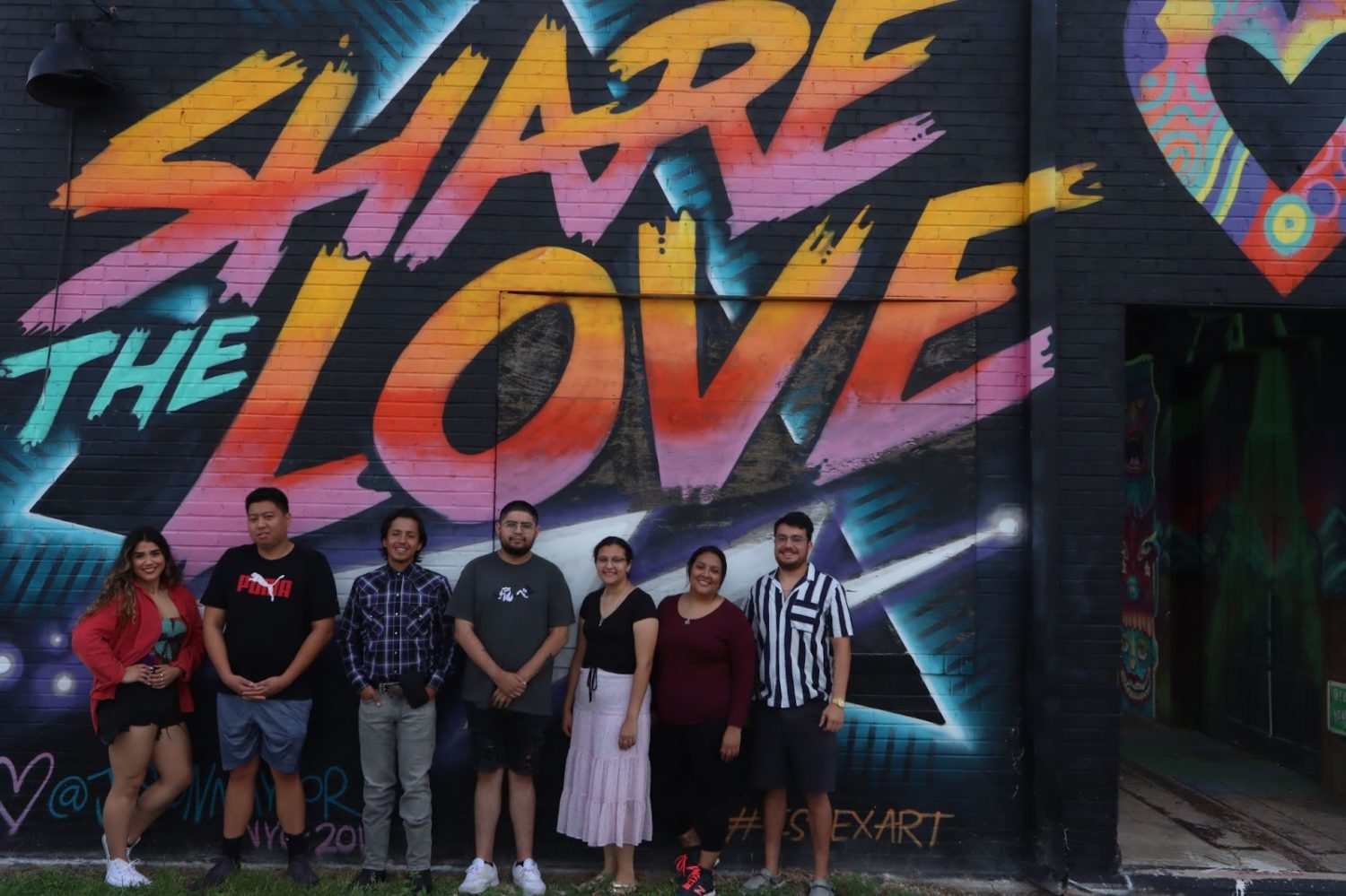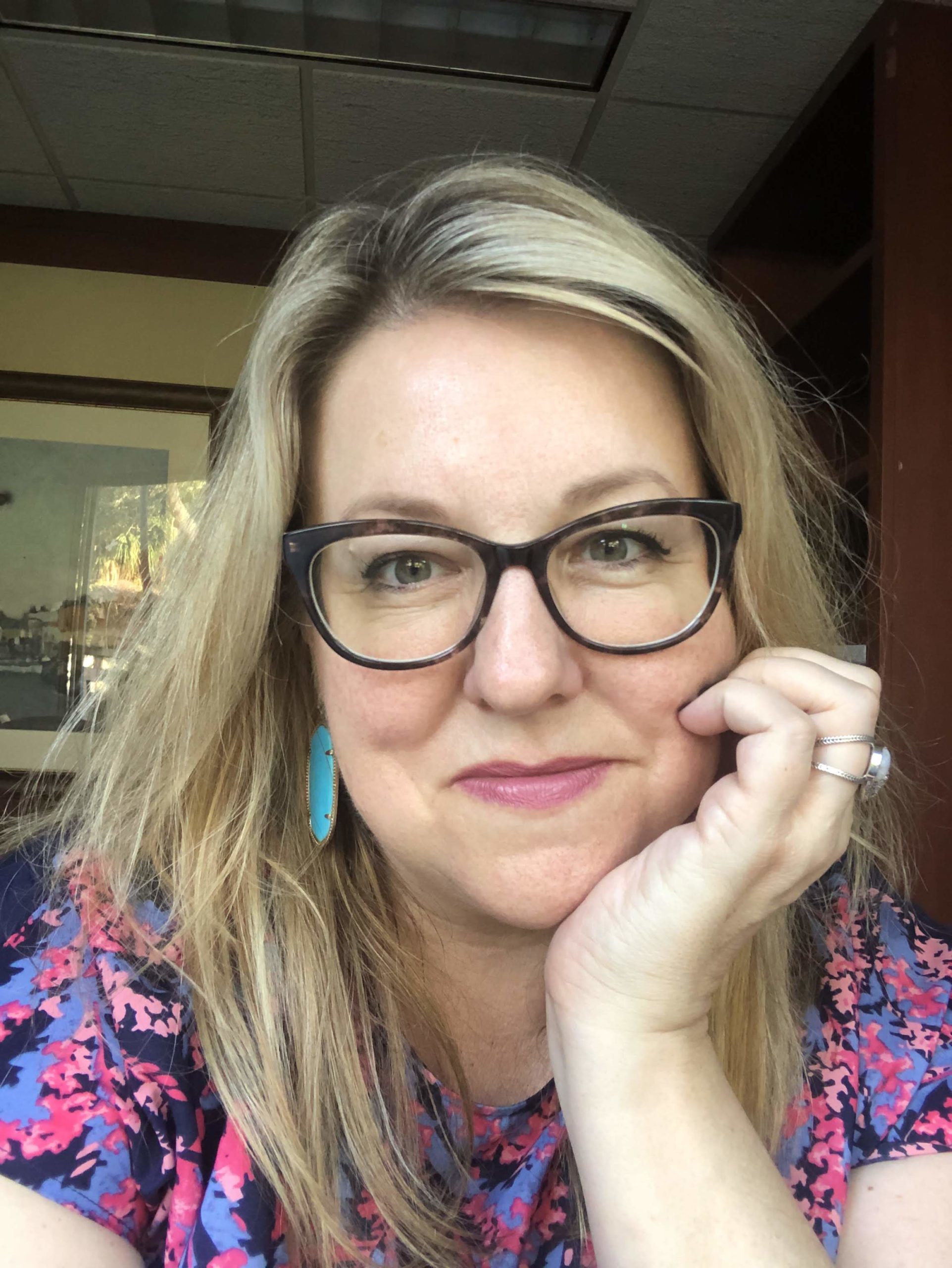Think “student life” on an American college campus and you’re likely to imagine hanging out on the quad, evening concerts and cheering on club sports.
But the student life picture looks different at Texas A&M University San Antonio — a Hispanic-serving institute that’s just 12 years old, has one residence hall and sits on 700 acres of underdeveloped Texas countryside.
So what’s a student club to do to get people to engage?
The student journalists at El Espejo magazine wanted to find out, so they dedicated part of their biannual magazine to answering that question.

Some of the staffers at training in August in San Antonio. (Photo by Barbara Allen)
Jocelyn Sandoval was the fall 2021 editor-in-chief of El Espejo magazine, which was recently honored by the Associated Collegiate Press with a Pacemaker in the four-year feature magazine division.
She and her fellow students at El Espejo this semester wanted to examine the specific challenges that the pandemic brought to student life at their campus.
Student journalists in the Poynter College Media Project were selected through an application process in the spring of 2021 that asked them to propose an investigation that centered on a problem or issue facing their campus. Dozens of student media outlets applied, and seven were selected for the program, which provided custom project planning, ongoing support from Poynter personnel and a slate of high-profile speakers. They included four-time Pulitzer winner David Barstow, Atlantic staff writer Ed Yong and Sara Ganim, who broke the Jerry Sandusky story as a young reporter.
The project was supported by a grant from the Charles Koch Foundation.
One of El Espejo’s pieces focused on the efforts of the men’s basketball club to become a full-fledged team, which would allow them to actually compete at the collegiate level and not just among students. The students also interviewed active students and club leaders to paint a picture of what student life was like during the pandemic and where it’s headed now.

Of course, the pandemic deeply impacted the magazine staff as well.
“When we went into a quarantine it was difficult,” Sandoval said. “I anticipated coming back to normal was going to be super fun and exciting, but it had its challenges in its own way. Even though we were in in-person classes, we chose to continue the online format for our staff meetings.”
That meant that the entire magazine was created remotely by students all over and around San Antonio.
“You kind of see how strong people are in these times and what pushes them forward,” she said.
Sandoval said the project was completed by design editor Jose Castillon and staff writers Alexander Chavarria and Joshua Villagomez, while Donna Pazdera and Rick Fisher advised. Sandoval also credited student media department head Jenny Moore for flagging the project and encouraging them to apply.
“If we were to give advice to any other schools who are taking on a project like this, I would say, definitely create a plan in the beginning. It was really important for us. … Have a really concrete plan and stick to it; stay organized and stay on schedule.”







